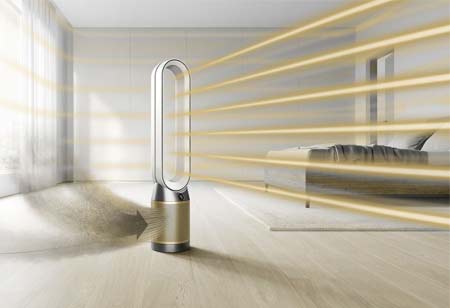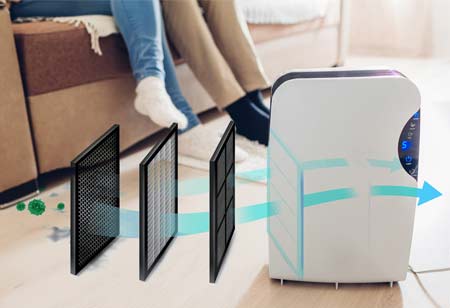THANK YOU FOR SUBSCRIBING

Innovations in Air Purification Technology
Daniel Ng, Director of Research and Innovation, Eversource Energy

 Daniel Ng, Director of Research and Innovation, Eversource Energy
Daniel Ng, Director of Research and Innovation, Eversource EnergyPurifiers create a stimulating indoor environment, reducing the risk of respiratory ailments and improving overall lung function.
FREMONT, CA: The demand for innovative air purification technologies drives rapid advancements in the field. From nanotechnology-enhanced filters to IoT-integrated smart purifiers, the landscape of air purification is evolving to meet the challenges of pollution and indoor air quality. By harnessing the power of emerging technologies, people can breathe easier, knowing that cleaner, healthier air is within reach. As urbanization intensifies and environmental concerns grow, these innovations are crucial for combating pollution and safeguarding public health.
Nanotechnology has emerged as a game-changer in air purification. Nanomaterials possess unique properties that enable highly efficient filtration of pollutants, including particulate matter, volatile organic compounds (VOCs), and even bacteria and viruses. Nanofiber-based filters, with their exceptionally high surface area-to-volume ratio, offer superior filtration performance compared to traditional filters. Photocatalytic nanoparticles can break down pollutants when light activates, enhancing air purification efficiency.
IoT is revolutionizing air purification systems by enabling real-time monitoring and control. Smart purifiers with sensors can detect air quality parameters such as particulate levels, VOC concentrations, and humidity. The data is then analyzed to adjust purification settings for optimal performance automatically. IoT connectivity allows users to remotely monitor air quality via smartphone apps and receive alerts when purification is needed, offering greater convenience and peace of mind.
Electrostatic precipitators (ESPs) are gaining traction as highly efficient air purification devices. Unlike traditional filters that rely on mechanical filtration, ESPs use electrostatic forces to remove airborne particles. The technology is particularly effective at capturing delicate particulate matter, making it invaluable for combating air pollution in urban and industrial environments.
Plasma-based air purification systems are emerging as a promising solution for eliminating airborne pathogens and pollutants. The systems utilize ionization to generate plasma, which reacts with contaminants to neutralize or transform them into harmless compounds. Plasma technology can effectively target various pollutants, including viruses, bacteria, mold spores, and VOCs, offering comprehensive air purification in residential, commercial, and healthcare settings. Plasma-based purifiers produce minimal ozone, ensuring safety and compliance with air quality standards.
With sustainability becoming a key focus across industries, there is a growing emphasis on eco-friendly air purification solutions. Green technologies prioritize energy efficiency, using renewable energy sources and minimizing environmental impact. For instance, some air purifiers integrate advanced filtration materials derived from natural sources, such as activated carbon from coconut shells or zeolite minerals. Energy-efficient designs and low-power consumption help reduce carbon footprint while maintaining effective air purification performance.
Personalized air purification solutions are gaining popularity, catering to individual preferences and requirements. Modular purifier designs allow users to customize their purification systems based on room size, specific contaminants, and aesthetic preferences. Advancements in wearable purification technology enable individuals to carry portable air purifiers that provide clean air wherever they go. The personalized solutions empower users to take control of their indoor air quality and create healthy living environments tailored to their needs.
Emerging trends like nanotechnology, IoT integration, and plasma-based purification are reshaping the air purification landscape, offering more efficient and customizable solutions. Electrostatic precipitators and green technologies further contribute to sustainability and effectiveness. Personalized purification solutions empower individuals to tailor air quality management to their needs.
Read Also





















ON THE DECK
Air Purification Technology 2024